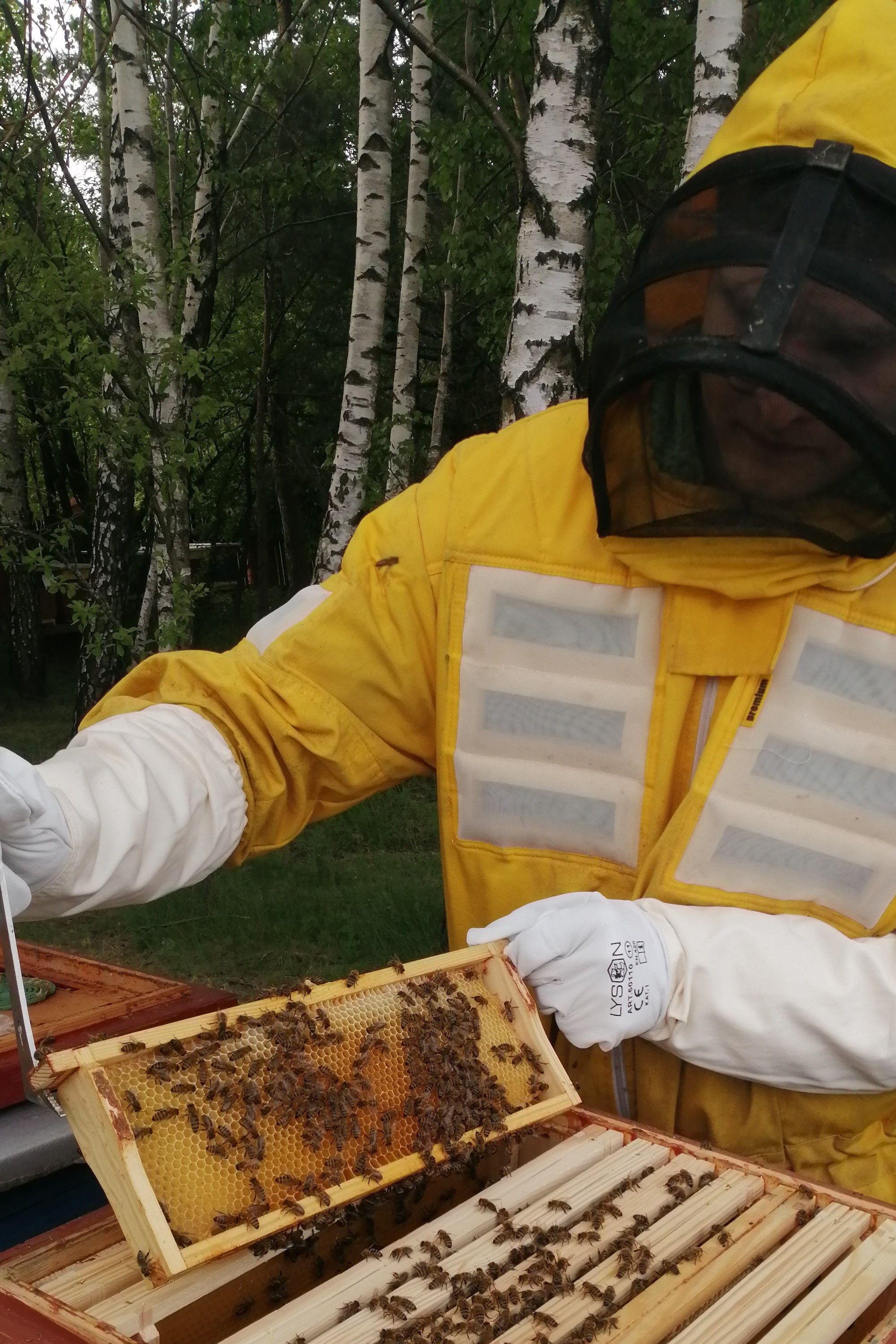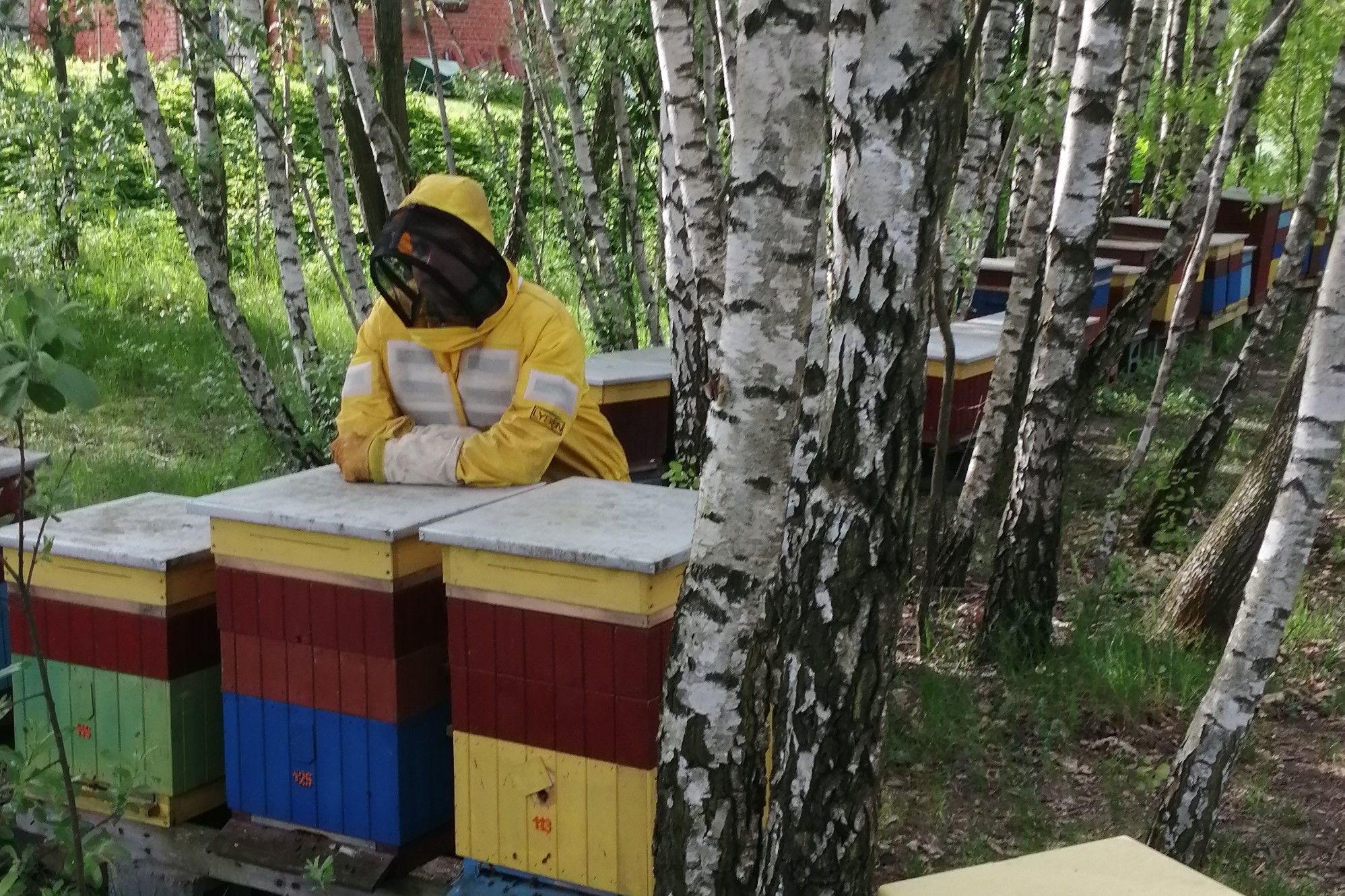
On bees
Spring kept us on tenterhooks for a long time, but it’s finally arrived. Nature is burgeoning and the bees are out and about, hard at work and as busy as… well… as busy as bees. Last year, we encouraged MakoLabbers to sow meadow flowers, which provide not only a natural ecosystem for insects, but also an astounding system for regulating the amount of water in the environment.
With the flowers and the bees all around us, Insights decided to explore the topic of honey. To that end, we talked to Krzysztof Parasiak, a member of the MakoLab DevOps team.
Krzysztof, before we move on to the essence of today’s meeting, could you tell us what you do at MakoLab?
Broadly speaking, as part of the company’s DevOps, I deal with supporting applications, reviewing logs and events and responding to incidents. I can also be involved in working on automatisation, like building cloud infrastructures, for example. In addition, over the past few months, I’ve been mentoring at a DevOps boot camp. The first ‘boot-campee’, Przemek, completed it successfully this month.
How do you find working at MakoLab?
It’s highly enjoyable. Interesting problems crop up and need solving and the atmosphere on Grzegorz Sztandera’s team is genuinely great. Of course, there are sporadic difficulties, although thanks to the outstanding people, we find the right way to deal with anything and everything.
OK, so let’s move on to your interest in bees and honey. Where did it spring from?
As a child, I used to love eating honey by the jarful. As for apiculture, well, it’s been in my family for generations. Before the Second World War, one of my paternal great-great-grandfathers had a hundred and fifty families of bees around fifty kilometres north of Warsaw in a village called Toruń Włościański. He kept them in what are known as Warsaw beehives. I use a different type, the Wielkopolski hive. They differ in terms of their construction and the size of the frames and the choice of type is a matter of the apiarist’s preferences. But coming back to my great-great-grandfather, I’d also like to say that he supplied honey to some of the residents of Warsaw, transporting it in wooden barrels. His daughter, in other words, my great-grandmother also kept bees, although she had fewer of them. That was in northern Poland, in a town called Sztum, near Malbork.
On my mother’s side, one of my great-grandfathers started with about twenty hives in the countryside, but after he moved to Malbork, he kept just two for himself and there they stood, in the centre of the city. My great-uncle had around twenty hives in the Żuławy Fens on the Vistula River delta. Right through the season, he’d travel several dozen kilometres to look after them. My father’s godfather also had two hives, so as to have honey for his own use. My great-grandfather’s cousin and the cousin’s children and grandchildren, who are currently members of the Malbork apiarists’ club along with my father, each have eighty hives. So there have been plenty of people on both sides of the family involved in beekeeping… and there still are.
Now we’ve made it up to the present, it was my father who persuaded me to develop my own apiary. I started in 2014 with six hives and I have a hundred and fifty now.
How long ago did you get involved in beekeeping?
This will be my third season running my own apiary, but I gained experience earlier by working with the bees in my dad’s hives.

Would you let us into a few of the secrets of apiculture?
Of course! To obtain different types of honey, we often transport the hives to specific sites for linden or acacia or phacelia nectar, for example. The sites are often a hundred kilometres away from the apiary. When it comes to oilseed rape, they can even be as far as three hundred kilometres away. We transport the hives at night, leave them at the site and return to the apiary in the early hours of the morning. We often end up with just two hours of sleep. After that, it’s up and on with more beekeeping tasks and then, the following night, we’re off again, back to the site, with the next batch of hives.
I need to say a few introductory words about the next beekeeping secret. Seven years ago, we had four hives of bees stolen at a goldenrod nectar site. We found out when we returned the next day and the hives were gone. But… there were whole colonies of bees, clouds of them, where the hives had stood. Why? Because the theft had been carried out in the daytime and then the bees had returned to the place where their hives had been. So we were able to collect them and put them in new hives.
The thing is this; bees can fly as far as five kilometres away from the hive. So, to ensure that they can reset their internal localisation mechanism when we transport them to a temporary site more than five kilometres away from the apiary, they have to be shut up in the hive and moved at night. That way, the next day, they fly away from the new site and return to it. The thief most likely didn’t know that and their ignorance probably meant they had a serious surprise when the hives stayed empty!
To combat situations like that, we use hive trackers. The moment a hive is stolen, its location is provided to the police. What often happens is that the thief arrives at their chosen destination just as the police are pulling up.
Another secret, although it happens less and less often, is this. There’s a type of building known as a stebnik. During a severe winter, the hives, complete with bees, are transferred to a stebnik for overwintering. It has to be quiet inside the stebnik, so that the bees don’t die. However, with the winters in Poland getting warmer all the time, meeting an apiarist who uses a stebnik is very unlikely. The bees being kept nowadays can tolerate winters of up to minus fifty degrees Celsius. It’s not frost that’s a problem for them, but damp. That destroys them. But while moisture in winter upsets bees, a single hive will need around fifty litres of water from spring to the end of summer in order to grow.
Not everyone knows that an average-sized hive houses around twenty to thirty thousand bees, weighing a total of two to three kilos. That’s right! A thousand bees weigh approximately one kilo. They live for about forty days, spending twenty of them working in the hive and the next twenty collecting nectar and pollen. A bee that’s reached the end of its days will fly far away from the hive and die in a spot where it won’t infect the rest of the family.
When it comes to what they produce, a single bee will collect around five grams of honey during its lifetime. In the course of a season, one hive is capable of producing approximately a hundred to a hundred and twenty kilos of honey. Eighty per cent of that will be used by the bees for their own growth and food.
At the apiary, we obtain really large quantities of bee pollen, which is rich in some of the four hundred or so types of ammino acids, minerals and vitamins that we humans need. It contains ammino acids which are necessary to the functioning of the human brain and essential to the functioning of the heart… and they only occur in pollen… well, unless you eat a ton or so of flowers! Bee pollen provides protection against coronary heart disease, strokes and infarction. It protects the prostate, detoxifies the liver, regulates body mass and improves the condition of our hair, nails and skin.
It also restores the intestinal villi, in other words, the body’s internal barrier which catches poisonous compounds. For example, when we eat bread that contains a large quantity of Roundup, the villi atrophy and all the chemicals make their way into the body’s cells, often causing cancer. So consuming pollen not only detoxifies the system, but also restores it. Pollen dissolves harmful compounds that occur after alcohol consumption, too. Doctors recommend taking at least thirty grams a day.
In addition to honey and bee pollen, we obtain propolis, also known as bee glue. It’s a natural antibiotic. The bees collect it from flower buds and all kinds of trees, but particularly from alders and spruce. It can cure stomach and duodenal ulcers and treat colds. When it’s applied to wounds, they heal very quickly. It can combat tuberculosis, as well. There are no contraindications in terms of using it with other antibiotics prescribed by a doctor for the respiratory tract.
There’s a Polish documentary film called Łowcy Miodu / Honey Hunters. It’s full of other fascinating facts and secrets about apiculture and the ancient art of gathering honey from colonies of wild bees. The leading actors visit apiaries in Poland, Bashkortostan, Nepal and France as the film ranges from traditional wild honey gathering to hives located on the roof of Notre Dame cathedral. It also offers information on the word ‘food’! Here’s a link to it.
What would you tell people who are frightened of bees or are fans of paving stones and perfectly manicured lawns?
In essence, I don’t know what I’d say to them, but I do invite them to visit our apiary, where the grass is mown but we leave islands of flowers like dandelions and daisies, which also add a charm of their own. It looks a bit like a golf course, except the islands feature flowers, not holes!
If someone mows their lawn mechanically, using a mower, for example, well, that’s OK, but there are also people who take a spray to any flowers growing in their grass. In destroying the flowers, they destroy insects, as well. To me, that’s rather less acceptable. In general, insects need flowers in order to grow.
As for people who are afraid, it’s only those with an allergy who should be careful of bees, because a sting might lead to anaphylactic shock. Anyone else might feel some discomfort on account of the fact that something’s flying around them, but they don’t have anything to be frightened of, even if they do get stung. The body often reacts to a bee sting by swelling but, with time, that disappears and, when they get stung after that, they won’t experience the same symptoms. And, in itself, the venom a bee injects when it stings contains elements the body can use.
At this point, I should add that, until a few years ago, I couldn’t be around bees, which was thanks to a minor trauma that I experienced on the beach when I was seven and a wasp stung me on the eyelid. Still, in time, anything can be overcome and now I happily head off to the apiary.
Finally, I’d like to say that anyone who finds themselves near the town of Ostróda in the Masuria Lake District can visit the apiary. Our bees aren’t fierce. That’s because we collaborate with a bee breeder, Professor Jerzy Wilde, of the Chair of Apiculture at the Warmian-Masurian University in Olsztyn. He bred the Kortowo line of Carniolan bees and that’s a very docile bee which gives a lot of honey and pollen.
Here’s a link to a page about an apiary and health-food shop run by one of my family.

All that’s left for us to do is stir some honey into our tea and recollect that none other than Albert Einstein said “If the bee disappeared off the face of the earth, man would only have four years left to live”…
Translated from the Polish by Caryl Swift

Kamila Braszak
Employer Branding Specialist




